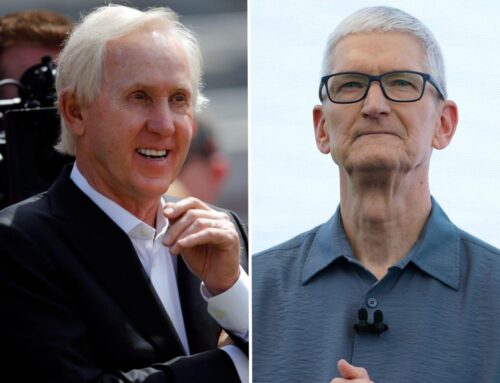Climate experts sound alarm on AI’s hidden environmental costs
June 26, 2025

SEATTLE – The popularity of AI is skyrocketing, but some are raising concerns about its strain on the power grid.
Some climate experts are sounding the alarm that generative AI, or gen AI, could lead to a surge in greenhouse gas emissions, requiring not only immense energy to train and create the models, but also to power their everyday use.
Beyond the electricity demand, large amounts of water are needed to cool the hardware used to run gen AI.
FOX 13 Meteorologist Abby Acone spoke with Dr. Noman Bashir of the Massachusetts Institute of Technology, who says that while a single query isn’t energy intensive, it’s the cumulative effect that matters.
What are the environmental impacts of Generative AI?
What they’re saying:
“Environmental impacts of generative AI are multi-fold, primarily because AI is highly computationally intensive. It requires a lot of energy not only to train these big models, but also whenever people use them – even though a single query or a single use of an AI model is not as energy intensive – when billions of people use that, it requires a significant amount of energy.” said Dr. Noman Bashir with MIT’s Climate and Sustainability Consortium.
“Since the electricity use and GPU use [Graphics Processing Unit] that power the models generate a lot of heat, there is a lot of water used to cool these data centers down and also cool down the electricity generation using fossil fuels, such as coal power plants and gas power plants,” he said.
“So, in addition to electricity use, it’s also the water use. And finally, there are also impacts on the biodiversity, or the local health impacts, because of the emissions of greenhouse gas from the local generators that are on these data centers themselves.”
If AI has environmental downsides, why is it still used to improve climate forecasts?
“I think that definitely, there are benefits to using AI,” said Dr. Noman Bashir with MIT’s Climate and Sustainability Consortium. “Tangible benefits are definitely in terms of climate or weather predictions, because they are highly complex phenomena that go on weather predictions and other natural phenomena. So, using AI is definitely beneficial for those topics.
“It’s more the blind use of AI for all applications that is more of a problem, rather than targeted use of AI for a specific application.”
Will there be more benefits or drawbacks to the environment with the use of gen-AI?
“It is a very hard question to answer, and I would say that there are definitely benefits, but as long as we are judicious in using our AI capabilities for the applications where we see the most benefits,” said Dr. Noman Bashir with MIT’s Climate and Sustainability Consortium. “That approach is going to kind of protect us against the worst-case scenario where we apply AI to every possible use case, but it does not pan out that way, because a lot of talk about AI is about the potential benefits, but not the realized benefits. And we will only know once we apply for certain applications, and we’ll know that how much benefits can be gained. So, it should be very judicious use case, not a blind application of AI for all applications.”
Is it a problem that AI companies are not fully transparent about energy use?
Big picture view:
“Yes, because right now all of the estimates about the energy use of AI are from experts in academia or government institutes that do not have full view of how much energy is being consumed by a particular model,” said Dr. Noman Bashir with MIT’s Climate and Sustainability Consortium. “There may be some numbers available for, let’s say, full-scale companies, but that does not tell how much of the energy can be attributed to a particular use of generative AI.
“So, there are estimates about how much generating an image using AI, how much energy does that use, but specific numbers cannot be put. We just know that AI is more computationally power intensive. Doing tasks such as generating an image takes more energy than simply answering, like asking a simple question – text-based question. So, there are high level insights that we know without a buy-in from the companies that can provide actual numbers, but it’s very hard to estimate without any kind of like transparency from companies about particular model training and use guesses.”
The Source: Information for this story comes from a live interview with Dr. Noman Bashir of the Massachusetts Institute of Technology (MIT) on Good Day Seattle.
MORE NEWS FROM FOX 13 SEATTLE
Feds share new Travis Decker WA manhunt photos
$79M Seattle-area home is now most expensive listing in Pacific Northwest
WA’s first In-N-Out close to opening in Ridgefield
Kent man charged with supplying chemicals in CA bombing dies in jail
Travis Decker search update: Cadaver dog joining WA manhunt
Suspect in deadly Edmonds ferry dock crash faces murder charges
To get the best local news, weather and sports in Seattle for free, sign up for the daily FOX Seattle Newsletter.
Download the free FOX LOCAL app for mobile in the Apple App Store or Google Play Store for live Seattle news, top stories, weather updates and more local and national news.
Search
RECENT PRESS RELEASES
Related Post




